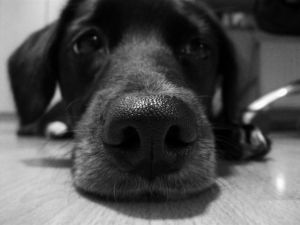 Pet Dander is one of those microscopic particles found in many homes that can cause allergic reactions and trigger asthma. Here is some more information about pet dander and what you can do to reduce the amount of it in your home.
Pet Dander is one of those microscopic particles found in many homes that can cause allergic reactions and trigger asthma. Here is some more information about pet dander and what you can do to reduce the amount of it in your home.
What is Pet Dander?
Pet dander is not animal hair; it is the tiny bits of skin flakes skin produced by every animal. Many people think they are allergic to cat or dog hair, but most are allergic to dander. Some people are severely allergic to pet dander, while others have less severe reactions.
Where is Pet Dander Found?
Pet dander is found anywhere pets are found. All animals shed hair and skin and leave traces of it behind everywhere the go. Dander is often so small that it can become airborne and reach the tops of surfaces that pets do not go, so just because Fido does not sit on the couch that does not mean that dander cannot be found on the couch. Pet dander can also stick to people’s hair, skin, and clothing that come in contact with animals, their bedding, or places animals have been.
How Do You Control Pet Dander?
Keep pet dander at a minimum by cleaning and dusting frequently. Wash animals and their bedding and brush them outdoors. Offer pets their own place to sit and sleep rather than allowing them on furniture.
What If I am Allergic to Pet Dander?
The best way of controlling allergic reactions is avoidance. If you are unwilling to part with the animal consider the following suggestions:
- Receive treatment or consultation from an Allergist.
- Make sure to wash your hands after petting any animal and never rub your eyes.
- Wear a protective mask and gloves when grooming.
- Litter boxes should be placed in an area unconnected to the air supply for the rest of the home.
- Keep pets off furniture.
- Change clothing worn after grooming or playing with pets.
- HVAC systems can spread allergens throughout the home, change the furnace filter regularly, and keep the air ducts clean.

